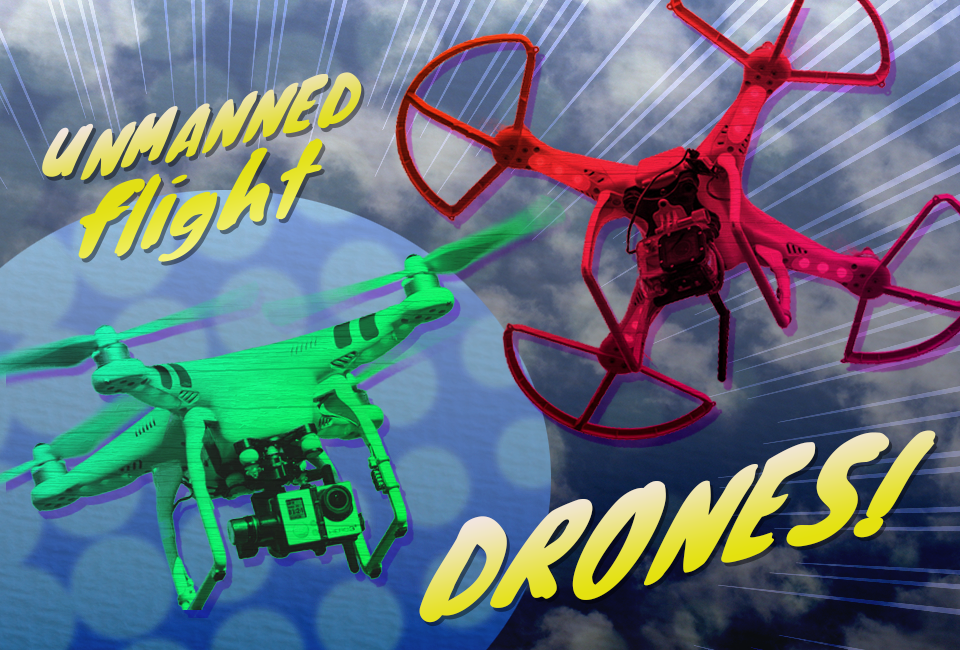New drone laws take flight

The Federal Aviation Administration (FAA) implemented its decision to require individuals to register all unmanned aircraft systems, or drones, weighing more than 0.55 pounds as of Dec. 21, 2015.
In an October statement, FAA Administrator Michael Huerta attributed the need for regulation to an increase in recreational drones. Such drones have been involved in a number of recent incidents including interfering with helicopters during the California wildfires and crash landing into a tree on the south lawn of the White House.
The registration will help identify the owner of a drone in the case of an infraction. In addition, registration will help owners retrieve their drone in case it is lost.
Nathan Jeter, communication major, explained how registering a drone could be beneficial to the owner.
“Some of the drones tend to fly away,” Jeter said. “If somebody finds it and reports it, the FAA has the serial number; they can get it back to you. That’s a really good thing about it.”
Individuals who purchased a drone before Dec. 21, 2015, are required to complete registration by Feb. 19, 2016. Whereas, individuals who purchased a drone after Dec. 21, 2015, must register it prior to outdoor use.
Drone owners can register their drones online through the Small Unmanned Aircraft System (sUAS) Registration Service provided by the FAA. These include drones used outdoors for hobby or recreational purposes.
Individuals who own drones that weigh more than 55 pounds cannot register online; they must register by paper. The instructions and the registration form can be found online through the FAA website.
There is a $5 registration fee, which requires renewal every three years. Upon registration, individuals will be given a unique number that must be imprinted on any and all of their drones. Any method can be used to transcribe the number onto the drone as long as the number is clearly legible and visible when examined closely.
Failure to register drones that meet the required criteria could result in civil or criminal penalties.
An FAA spokesperson said that charges “range from warning letters to civil penalties. For individuals, the maximum civil penalty per violation is $1,100. For small businesses and individuals not acting as airmen, the maximum is $11,000 per violation.”
Safety guidelines for drone use include flying below 400 feet, remaining clear of surrounding obstacles and, if operating a drone within a 5-mile radius of an airport, informing airport authority. A complete list of safety guidelines can be found on the FAA webpage for model aircraft operations.
“We generally say operators should avoid airports and stay away from manned aircraft operations,” said the FAA spokesperson.
As for flying drones on the University of Houston-Clear Lake campus, the answer is yes. Allen Hill, interim police chief, said drones are allowed on campus.
“Currently there is not a restriction on having a drone on campus,” Hill said.
However, when operating drones on the UHCL campus, individuals should keep in mind both FAA regulations for proper drone use and the UHCL policies addressing student conduct.
“Because the campus is located within 5 miles of an airport, namely Ellington Field, you must contact the airport and control tower before flying a drone on campus,” Hill said.
David Rachita, interim dean of students, explained that when operating a drone on campus, students should abide by the student code of conduct.
“There is no policy currently that specifically refers to drones,” Rachita said. “If there is a disruption to the educational environment, that would then be a code violation.”
Hill explained that depending on the severity of an offense, possible penalties include warnings, fines or jail time.
“As the interim chief, I am concerned about anything that may pose a safety risk to our community,” Hill said. “Our officers are trained to respond and handle issues appropriately, such as a drone being operated in an unsafe manner on campus.”
Should individuals have questions or want to report a violation, contact the Police Department at 281-283-2222 or send an email to policechief@uhcl.edu.
Meanwhile, there are prominent signs that drones are beginning to gain interest on campus.
Gregory Hemenway, president of UHCL’s Artificial Intelligence and Technology (AIT) club, said the club is interested in swarm robotics. AIT is currently working with drones and is involved in the NASA Swarmathon.
“Swarms have many practical applications and may one-day aid humans in search and rescue operations, clean up after a natural disaster, and even in delicate medical surgeries,” Hemenway said.
The club is working with the Hubsan x4 (H107L) quadcopter.
“We are currently in the process of hacking our quadcopters,” Hemenway said. “Once we successfully connect them to a computer, we hope to construct a control system that can allow the drones to autonomously operate as a coordinated unit, i.e. a swarm.”
Hemenway said he finds the new registration law reasonable.
“Drones could possibly pose violations to personal privacy,” Hemenway said. “A lot of drones come with built-in cameras, and they have almost unbridled access to any location. There is nothing stopping someone from flying their drone onto anyone’s property and spying on them without their knowledge. I feel that making owners register their drones is just a way to protect the public’s rights and safety.”
It’s a bird! It’s a plane! It’s a…drone?
Written by: Samantha Rolin
From ferrying missiles to carrying cameras, drone development has taken off over the years.
OTHER LINKS OF INTEREST
Hawks and drones soar high
Written by: Liz Davis, Editor-in-Chief
My birthday was a few weeks ago and one of my favorite gifts was the drone my dad gave me. READ MORE


[…] New drone laws take flight […]